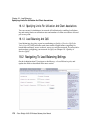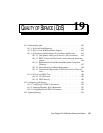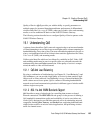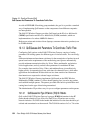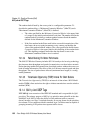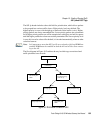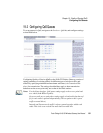Chapter 19: Quality of Service (QoS)
QoS Queues And Parameters To Coordinate Traffic Flow
184
Psion Teklogix 9160 G2 Wireless Gateway User Manual
As with all IEEE 802.11 working group standards, the goal is to provide a standard
way of implementing QoS features so that components from different companies
are interoperable.
The 9160 G2 Wireless Gateway provides QoS based on the Wireless Multimedia
(WMM) specification and Wireless Multimedia (WMM) standards, which are
implementations of a subset of 802.11e features.
Both access points and wireless clients (laptops, consumer electronics products) can
be WMM-enabled.
19.1.3 QoS Queues And Parameters To Coordinate Traffic Flow
Configuring QoS options on the 9160 G2 Wireless Gateway consists of setting
parameters on existing queues for different types of wireless traffic. You can config-
ure
different minimum and maximum wait times for the transmission of packets in each
queue based on the requirements of the media being sent. Queues automatically
provide minimum transmission delay for Voice, Video, multimedia, and mission
critical applications, and rely on best-effort parameters for traditional IP data.
For example, time-sensitive Voice, Video, and multimedia are given effectively
higher priority for transmission (lower wait times for channel access), while other
applications and traditional IP data which are less time-sensitive but often more
data-intensive are expected to tolerate longer wait times.
The 9160 G2 Wireless Gateway implements QoS based on the IEEE Wireless
Multimedia (WMM) standard. A Linux-based queuing class is used to tag packets
and establish multiple queues. The queues provided offer built-in prioritization and
routing based on the type of data being transmitted.
The Administration UI provides a way for you to configure parameters on the queues.
19.1.3.1 QoS Queues And Type Of Service (ToS) On Packets
QoS on the 9160 G2 Wireless Gateway leverages WMM information in the IP
packet header related to Type of Service (ToS). Every IP packet sent over the
network includes a ToS field in the header that indicates how the data should be pri-
oritized and transmitted over the network. The ToS field consists of a 3 to 7 bit value





